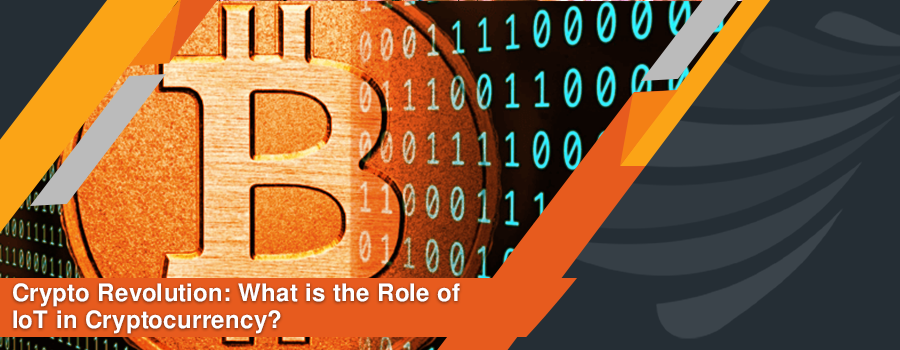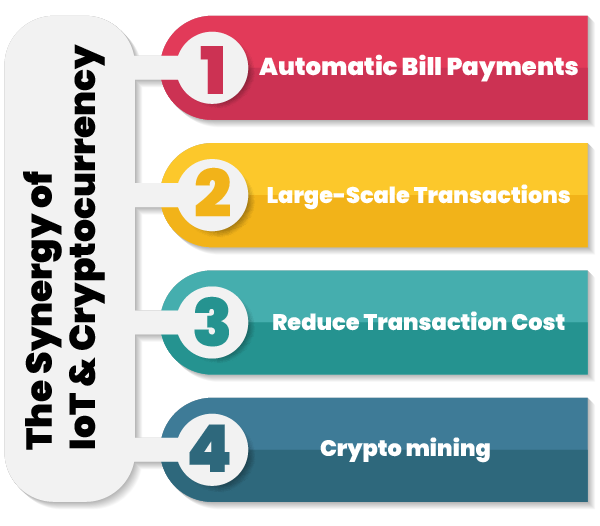In this era of technological revolution, cryptocurrency and IoT have revolutionized the digital landscape. Cryptocurrency has brought a convenient and secure concept of financial transactions. Meanwhile, IoT has empowered the world with interconnected devices that provide seamless communication and data sharing. The fusion of cryptocurrency and IoT can overcome individual challenges and bring breakthroughs in the networking world.
This article highlights the basic concept of IoT and cryptocurrency, the benefits of their integration, and the top IoT crypto coins you may consider to invest.
Understanding IoT and Cryptocurrency
Cryptocurrency represents an advanced financial system. Blockchain technology provides a transparent, decentralized, and secure ledger for digital transactions. The decentralized structure of cryptocurrency allows the existence of the system outside the control of central authorities and government. In simple words, it is a digital currency created with encrypted algorithms. Encryption technologies allow cryptocurrencies to operate as virtual accounting systems and digital currencies.
Among different cryptocurrencies, Bitcoin is renowned and has set an example for the financial revolution, allowing direct and trustful transactions without intermediaries.
Central to the appeal of cryptocurrency is blockchain. We can understand blockchain as a set of connected information blocks on an online ledger. Every block has a set of transactions that the validator verifies independently on the internet. Before confirmation, every generated block needs validation, allowing forged transaction history. Also, the online ledger content must be agreed upon by a network of individual nodes or computer system that maintains the ledger.
On the other hand, the Internet of Things (IoT) is an advanced technology representing the network of physical objects embedded with software, sensors, actuators, and other technologies to provide a strong connection and data exchange among different devices and systems.
In other words, it is a network of connected devices to facilitate communication and data sharing between different devices. With IoT, all over the world, different devices are connected over the internet, allowing data sharing over a huge platform. Adding sensors to the connected objects enhances digital intelligence, allowing real-time communication without human intervention.
The Synergy of IoT and Cryptocurrency
As we are more connected with the digital world, we use different IoT devices and rely on a secure system of payments. When crypto integrates with IoT, the transactions become seamless and secure. IoT devices easily integrate with a bank account for payments instead of a crypto account. Unlike normal bank accounts, which cannot provide security and anonymity in transactions for IoT devices, crypto accounts can provide high encryption standards. Now on a practical scale, IoT devices can make their purchases.
1. Automatic Bill Payments
We can get secure payment options for smart devices when IoT integrates with cryptocurrency. The time is near when we can program our smart appliances to ensure the products are available when needed. For example, Samsung has started working on introducing a smart refrigerator that can monitor and track groceries. It can also remind you of commodifies it and can even place an order for you. Here comes crypto – the enhanced security feature of buying and selling with IoT devices. Another example is a smart thermostat or internet device that can pay bills with crypto automatically before the due date.
2. Large-Scale Transactions
In public spaces and cities around the world, there is a huge implication of IoT and crypto we can experience. For making public space payments like parking charges, we traditionally use apps. Still, for payment, we need to give access to our phone and provide credit card information which is quite insecure. The crypto integration provides blockchain security, providing secure transmissions without the risk of hacking. Other applications include automatic lease payments by cars and automatic ordering of new bulbs by smart streetlights in case of any fault.
3. Reduce Transaction Cost
For e-commerce, we can consider IoT crypto the safest payment option. With cryptocurrency, you do not need to exchange bank information between devices, leaving less room for hackers. With less fear of fraud and hacking, businesses can focus more on new investments and business strategies, inclining businesses towards more profit. IoT crypto also plays a major role at the international level of businesses. To elaborate, the owner of any company is responsible for managing expenses. Every time they want to buy equipment or to meet other expenses, they consider currency exchange rates and lose some money due to transactions and inflation.
With cryptocurrency, they can experience reduced transaction costs. Unlike traditional payment systems, cryptocurrencies do not need intermediaries like payment processes, third-party platforms, or banks for transactions. In this way, e-commerce businesses have to pay fewer fees and commissions. Other benefits include less processing time with limited risks of fraud. Also, businesses do not have to worry about exchange rate fluctuations and conversion rates for cross-border transactions, increasing global reach and international opportunities.
4. Crypto mining
Crypto is a secure payment option, but the fluctuating crypto prices make it difficult to build a crypto account. When integrating IoT with crypto, we can do crypto mining –validating transactions by adding them to the blockchain.
We require a huge processing power for crypto mining because the crypto value is based on solving complex equations. With IoT, we can distribute the processing power among different devices under a well-connected network. According to recent updates, we can link 1,5000 IoT devices’ crypto coins worth thousands of dollars.
IoT -powered crypto mining provides a new form of decentralized transaction verification, providing stability in the crypto ecosystem and opportunities to actively contribute to the network’s integrity.Top of Form
Top IoT Crypto Coins in 2023
Let’s look forward to the latest IoT crypto coins.
1. VeChain (VET)
Vechain aims to offer a highly transparent market by organizing and collecting all important data.
VeChain relies on supply chain management and tracks products in the entire supply chain system with the help of blockchain. It has applications in different industries like pharmaceutical and agriculture. The VET holders can also participate in governance decisions.
2. IOTA (MIOTA)
IOTA aims to allow relationships between humans and machines with the help of the Internet of Things and helps build a machine economy for the future. It relies on unique technology known as Tangle, designed for handling data integrity and microtransactions for IoT devices. It ensures that the stored data of transactions is trusted and saved.
3. Helium (HNT)
This blockchain coin provides a decentralized wireless infrastructure. It provides solutions to different areas, such as smart water monitoring, smart agriculture, smart cities, and supply chain. The HNT cryptocurrency is used to validate wireless coverage and devices that participate in the network. HNT is mined and then distributed to Hotspot Owners and investors as incentives.
4. IOST
The Internet of Services Token (IOST) is a blockchain coin has aim to unite blockchain developers and service providers in one infrastructure. It is well known for its high scalability and secure network. Therefore, also considered a backbone for future online businesses. It has its digital wallets, consensus protocol, and network. Therefore, this coin is mostly used for fees and transactions and also gives incentives for maintaining the network.
5. DigiByte (DGB)
It is a peer-to-peer IoT cryptocurrency used as a medium of exchange for decentralized applications and smart contracts developed on the DigiByte blockchain. It allows high-speed transactions with enhanced security.
It uses five mining algorithms, preventing the dominance of any single mining entity and providing a more secure environment. Another important feature is it has a strong community. This community-driven approach for it that results in continuous improvement.
Conclusion
The fusion of IoT and crypto can benefit people on a huge scale. The large scale of transparency and accuracy provides more business opportunities. Businesses can focus more on earning profit instead of stressing about hacking risks. As developers and researchers still working on integrating IoT and cryptocurrency, we can expect a future wih highly secure connectivity and technological progress.





